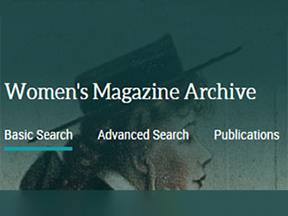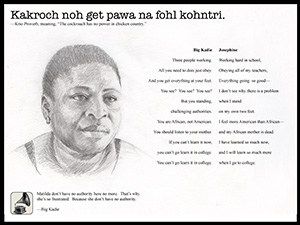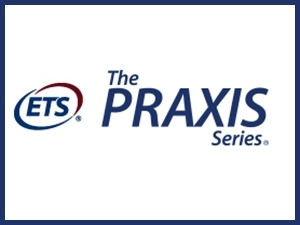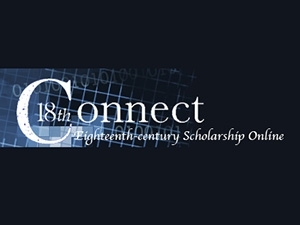Digital Humanities and the English Department
In "What Is Digital Humanities and What’s It Doing in English Departments?" Matthew G. Kirschenbaum explains why the emerging field of digital humanities finds its institutional home, most often, in English departments. Kirschenbaum suggests that:
- Since the inception of the computer, text has been easy to input into computers and easy for computers to manipulate. Computers have therefore been a part of English studies for a long time, particularly in the areas of stylistics, linguistics, and composition.
- In the 1980s and 1990s, the personal computer and the development of the commercial web gave rise to experimental writing (hypertext fiction) and scholarly efforts to digitize and archive canonical text (such as the Rossetti Archive). The study of hypertext fiction and digital archives has been conducted largely from within English departments.
- The last decade has seen an explosion of interest in e-books, e-readers, and massive-scale textual digitization projects, reinforcing the close connection between digital technology, reading, and textuality (6).
In their scholarship and teaching, the GVSU English faculty are invested in the methods and materials of the Digital Humanities field. The following examples represent faculty work in the Digital Humanities. These include published work or ongoing projects in digital studies and examples of technology-enhanced teaching.
Digital Projects by English Faculty

Sherry Johnson uses women’s magazines from the 19th-century to emphasize the constructedness of womanhood. The Women’s Magazine Archive contains issues of leading women’s interest magazines from the 19th-century through to the 21st-century. Students have access to multiple issues of over six publications dealing with subjects as diverse as Economics, Family Life, Popular Culture, and Social History. Dr. Johnson’s use of the Ladies’ Home Journal (1885), for example, allows students to actively engage with primary sources that intersect the study of literature and archival research skills, with technology. Consequently, it makes more tangible the lives of the characters with whom they engage in 19th-century American literature. Students scour articles and advertisements for examples of the virtues of the Cult of True Womanhood: purity, piety, submissiveness, and domesticity. Consequently, they understand the historical context in which constructions of gender and race work together to uphold and/or oppress both white and formerly enslaved women, respectively, of 19th-century US society. Dr. Johnson uses the archive as an instructional tool in ENG 231 Early African American Literature among other courses.

Bent Not Broken: A Family Remembers the War in Liberia and Sierra Leone
This interactive iPad app by Robert Rozema follows the life of a family trying to survive a brutal war in West Africa. The war took place in Liberia and Sierra Leone during the 1990s. All wars are cruel, but this one was particularly brutal—fought by warlords and their death squads of child soldiers, the war saw the deliberate targeting of civilians. Murder, rape, torture, and abduction were common tactics used by all factions, and the signature atrocity of the war, amputation, left thousands without hands and legs. Through a rich multimedia presentation that includes personal testimonies, images, maps, found artifacts, video, audio, and animations, Bent not Broken shows how one family survived the war and came to America in 2005. Professor Rozema uses his work to teach multimodal and multigenre composition in his secondary English education methods courses (ENG 310 and ENG 311). Bent Not Broken is archived in the Electronic Literature Directory.
[1527283650].jpg)
Spring: The Journal of the E.E. Cummings Society
Mike Webster is the web editor for the Spring: The Journal of E.E. Cummings Society. In this role, Professor Webster has been writing hypertextual notes on the writings of E. E. Cummings for over 20 years. Two prominent examples are his annotations of the poems The Enormous Room and EIMI, Cummings' modernist account of his 1931 trip to the Soviet Union. Professor Webster recently published an article in Spring explaining the necessity of this kind of scholarly annotation for students and teacher alike. Webster draws on his notes in his ENG 226 and HNR 214 and in his E.E. Cummings graduate seminar. He has also contributed to the EEC Society Blog, a scholarly resource created by Aaron Moe at St. Mary's College.
18thConnect Workshop
In an effort to develop the English Department’s contributions to the Digital Humanities, Ashley Shannon attended a workshop hosted by 18thConnect.org, the most significant aggregator of digital content related to the Long Eighteenth Century. As part of the annual conference of the American Society for Eighteenth-Century Studies, this workshop was well-positioned to offer concrete, hands-on experience in developing digital content (for example, using 18thConnect’s internally-developed TypeWrite software to read and edit open-access editions of eighteenth-century texts); to allow connections to be built with others in the field who are doing such work; and to model pedagogies that can help bring DH into the classroom. Positioning the Digital Humanities as service learning, the workshop emphasized the need to bring eighteenth-century texts out of the "Dark Archive"--scanned but not legible to computers—by correcting and translating them to plain text and, eventually, converting them into editions available to anyone with web access.

Praxis ESOL, Educational Testing Service
Working with digital sound files of non-native speakers of English, Shinian Wu develops test questions for an English teacher certification test (Praxis ESOL). One part of the test requires teacher candidates to listen to sound files of non-native speakers who show difficulty with certain discrete phonemes and/or pronunciation patterns in English, and then identify, by way of multiple-choice questions, exactly what difficulty English learners experience. Digital technology makes it possible for Professor Wu to embed such test questions with sound files anywhere in the test, which is web-based. Previously, teacher candidates had to listen to cassette tapes—a practical impossibility for a large-scale national test. The use of digital technology makes the test move closer to the criterion of authenticity called for by second language assessment specialists.
[1527283674].jpg)
The IWitness Holocaust Archive
Rob Franciosi has been using a digital archive of survivor testimonies in teaching HNR231: The Holocaust. Founded in 1994 by Steven Spielberg, the USC Shoah Foundation—The Institute for Visual History and Education contains over 50,000 video testimonies by survivors of the Holocaust, as well as of the Rwandan, Cambodian, and Armenian genocides. Only large research libraries have online access to the entire collection, but through its IWitness program, the foundation has made available some 1500 full-length testimonies. This resource is especially valuable for students as it allows them both to search and to collect segments from the testimonies. Last year, Professor Franciosi required students to complete oral presentations on particular aspects of the Holocaust and supplement their work with clips from the USC archive. Professor Franciosi plans to ask future students to focus on a single witness and to supplement the video with detailed annotations. He may also incorporate the IWitness program in other English courses, including ENG360: Holocaust Memoirs.


